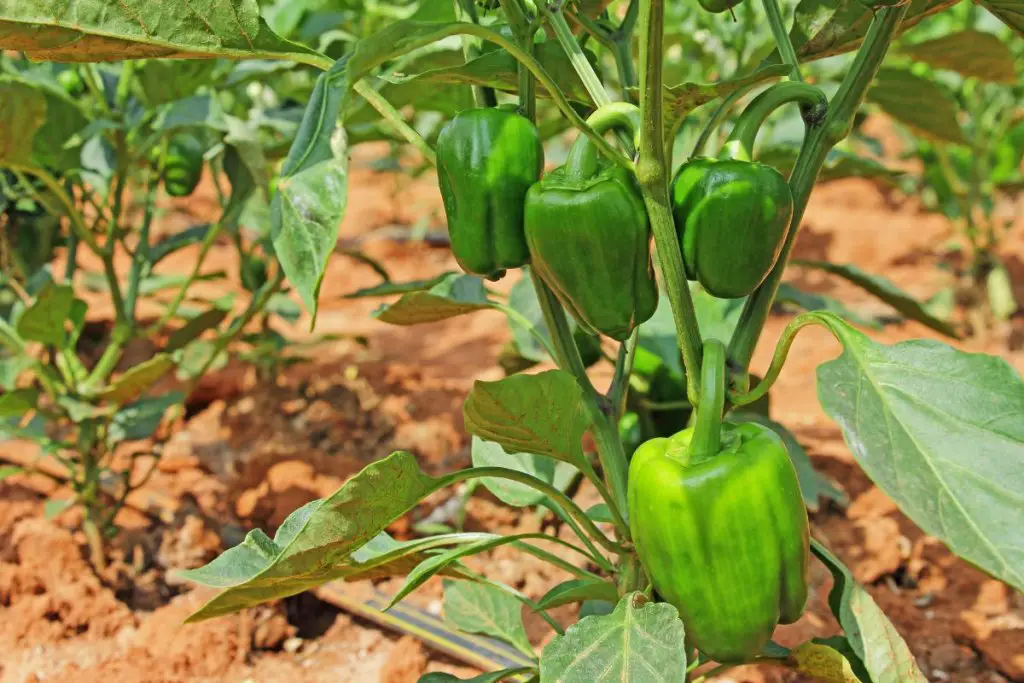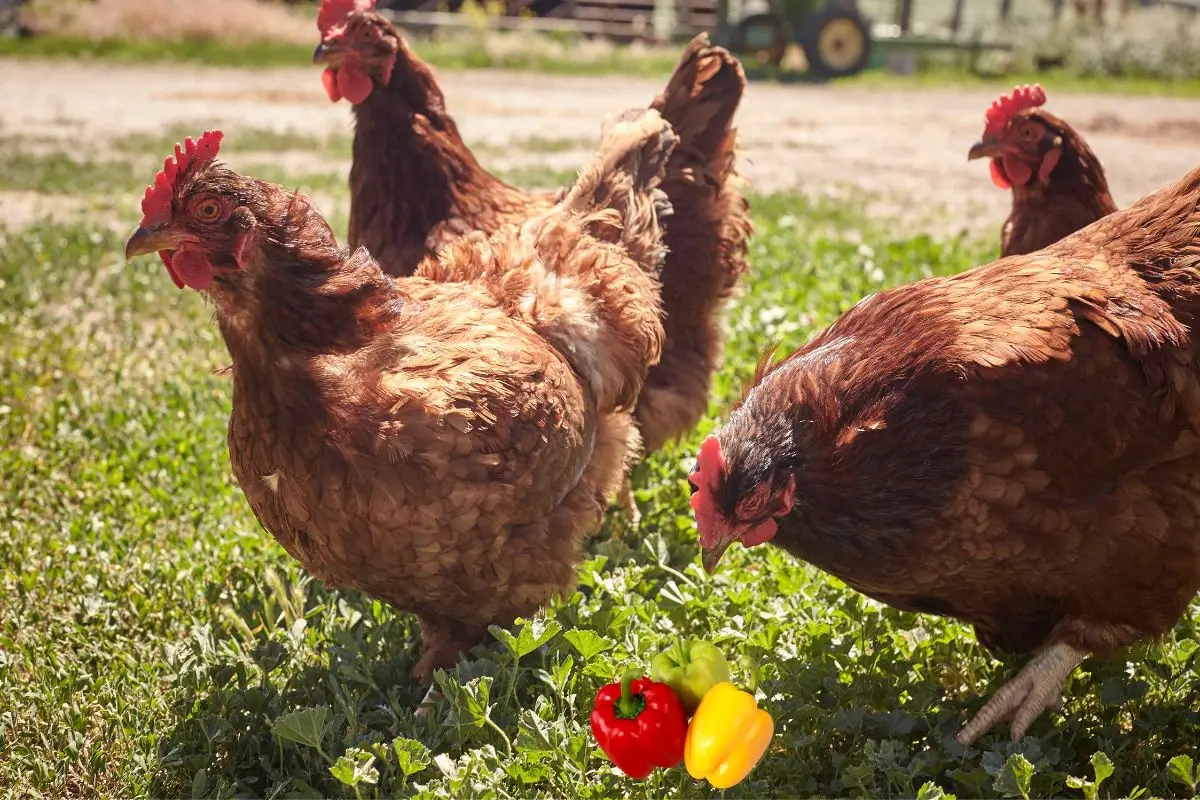Chickens can safely eat bell peppers including the flesh and seeds. However, the leaves, stalks and flowers are toxic and you should never feed your chickens these parts.
Is your garden overflowing with ripe peppers or did you make fajitas and have some leftover bell peppers and are you wondering if you can give these to your backyard chickens? If so, you’ve come to the right place.
Bell peppers are common throughout the world. In Australia, New Zealand, India and Pakistan, this vegetable is called capsium. While they’re great for us, not every healthy food is safe for chickens to eat, with avocado being a surprise to many.
This article discusses the role bell peppers play when fed to chickens, the health benefits of bell peppers, and the dangers associated with feeding the wrong parts (or too much) bell pepper to your chickens.
Table of Contents
Is it Safe for Chickens to Eat Bell Peppers?
New backyard chicken owners often question whether bell peppers can be safely fed to chickens. The answer is yes, but requires further explanation.
Only the pepper itself and the seeds are safe for chickens to consume because the bell pepper is a part of the nightshade family.

The nightshade family of plants includes peppers, eggplant, tomatoes, and potatoes. Parts of these plants may be toxic to chickens as they produce a compound called solanine, and yes, there are parts of the bell pepper that contain this compound.
The unsafe parts of the bell pepper are the bell pepper leaves, stalks and flowers.
As long as you don’t feed your chickens these parts, and only offer bell pepper seeds and bell pepper itself, your chickens can safely enjoy this healthy treat.
What Health Benefits do Bell Peppers Have?
Bell peppers have excellent nutritional value and are a great treat that you can feed to your chickens once in a while. Bell peppers are low calorie and low in fat and provide a moderate amount of carbohydrates (around 9g per pepper).
Bell peppers have over 3 grams of dietary fiber which aids the digestive system.
Most notably, bell peppers contain a lot of Vitamin b6 which helps use amino acids in your chicken’s body, and is the base for hormones and protein which help their metabolism, immune system, and nervous system.
Bell peppers also have Vitamin E, Vitamin A, Vitamin C, folate, potassium, beta-carotene, antioxidants and calcium! All of these are vital for a chicken’s health and chicken owners should provide supplemental foods as part of their chicken’s diet to ensure high egg production, longevity, and overall well-being.
Bell peppers also have a high water content (nearly as much as watermelon) and are great for helping your chickens stay hydrated when added alongside their usual chicken feed and fresh water.
Which Type of Bell Pepper is Best for Chickens?
This may seem like a trick question because green, yellow and red bell peppers are the same pepper, just at different stages of ripeness.
| Type | Ripeness |
| Green bell pepper | Unripe |
| Yellow bell pepper | Halfway |
| Red bell pepper | Ripe |
You can eat bell peppers at all stages of ripeness but the nutritional value (and taste) will vary with peppers that are on the vine longer developing more vital nutrients.
Red bell peppers are the clear winner when it comes to the best bell pepper to feed your chickens as it has the most nutritious!
What are the Risks of Feeding Chickens Bell Peppers?
The biggest risk in feeding bell pepper to chickens is accidentally feeding the parts of the bell pepper plant that are toxic because the results are often immediate, and can be fatal. The same can occur with apple seeds.
Just as you should always avoid feeding green potatoes to chickens, never allow your flock to have access to bell pepper plants because they can accidentally ingest solanine.
Aside from this, bell peppers aren’t a high-risk food as long as they are fed in moderation.

